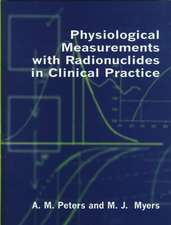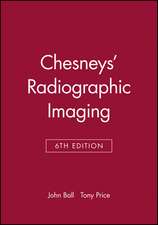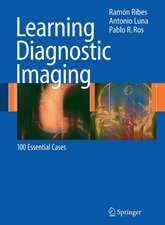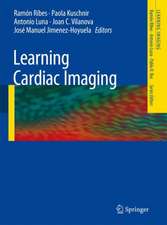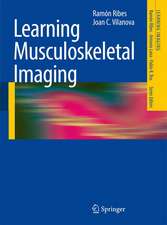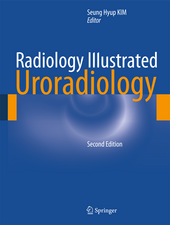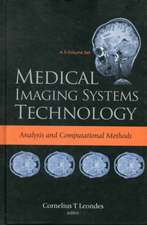Errors in Radiology
Editat de Luigia Romano, Antonio Pintoen Limba Engleză Paperback – 8 mai 2012
Preț: 790.32 lei
Preț vechi: 831.92 lei
-5% Nou
Puncte Express: 1185
Preț estimativ în valută:
151.23€ • 158.29$ • 125.87£
151.23€ • 158.29$ • 125.87£
Carte tipărită la comandă
Livrare economică 31 martie-14 aprilie
Preluare comenzi: 021 569.72.76
Specificații
ISBN-13: 9788847023383
ISBN-10: 8847023386
Pagini: 328
Ilustrații: XVI, 312 p. 90 illus., 30 illus. in color.
Dimensiuni: 155 x 235 x 17 mm
Greutate: 0.7 kg
Ediția:2012
Editura: Springer
Colecția Springer
Locul publicării:Milano, Italy
ISBN-10: 8847023386
Pagini: 328
Ilustrații: XVI, 312 p. 90 illus., 30 illus. in color.
Dimensiuni: 155 x 235 x 17 mm
Greutate: 0.7 kg
Ediția:2012
Editura: Springer
Colecția Springer
Locul publicării:Milano, Italy
Public țintă
Professional/practitionerCuprins
1 Errors in radiology: definition and classification.- 2 Malpractice claims in mammography.- 3 Errors in the diagnosis of lung neoplasms.- 4 Errors in polytrauma.- 5 Missed fractures in the Emergency Department.- 6 Missed fractures in children.- 7 Plain film or MDCT as first diagnostic tool in patients with cervical spine injury: critical issues.- 8 Errors in sonography.- 9 Errors in color Doppler ultrasonography.- 10 Errors in MDCT angiography.- 11 Errors in MDCT coronary angiography.- 12 Errors in the diagnosis of hepatic neoplasms.- 13 Pitfalls in pancreatic imaging.- 14 Errors in interpretation of non-traumatic acute abdomen.- 15 Errors in MDCT diagnosis of intestinal ischemia and infarction.- 16 Crohn’s disease: Errors of interpretation in emergency MDCT evaluation.- 17 Pitfalls of MRCP in the evaluation of the biliary tract and pancreatic duct.- 18 Errors in musculoskeletal MRI.- 19 Errors and medico-legal issues in interventional radiology.- 20 Errors in radiology reporting.- 21 Errors in radiology: a biostatistical framework.- 22 Child abuse: imaging and legal aspects.- 23 Retained intra-abdominal surgical sponges: critical issues.- 24 Foreign bodies ingestion and colorectal foreign bodies: diagnostic challenges.- 25 Radiological and medico-legal problems of body-packing.- 26 Assessment of risk in radiology using malpractice RVUs.- 27 Contrast media administration: safety issues and legal aspects.- 28 Strategies to reduce errors in radiology.
Recenzii
From the reviews:
“The authors describe in detail many of the types of errors in radiology that can occur in various clinical studies. … It is written for practicing radiologists, but it also will be of benefit to residents and fellows in radiology. … This is an important topic, and this book provides an excellent discussion of the various types of errors and presents useful information for error reduction. It should be a valuable reference in the library of every radiology department.” (Bennett S. Greenspan, Doody's Book Reviews, April, 2013)
“The authors describe in detail many of the types of errors in radiology that can occur in various clinical studies. … It is written for practicing radiologists, but it also will be of benefit to residents and fellows in radiology. … This is an important topic, and this book provides an excellent discussion of the various types of errors and presents useful information for error reduction. It should be a valuable reference in the library of every radiology department.” (Bennett S. Greenspan, Doody's Book Reviews, April, 2013)
Textul de pe ultima copertă
Diagnostic errors are important in all branches of medicine because they are an indication of poor patient care. As the number of malpractice cases continues to grow, radiologists will become increasingly involved in litigation. Accordingly, every radiologist should understand the various sources of error in diagnostic radiology as well as the elements of negligence that form the basis of malpractice litigation.
The principal focus of this book is on the diagnostic errors that may be perpetrated when using diverse radiologic techniques in different disease settings. The full spectrum of potential errors is analyzed with the aid of high-quality illustrations and with clear guidance on their avoidance. In addition, medicolegal aspects inherent to radiology are carefully examined, with particular attention to radiation exposure due to imaging procedures and malpractice issues relating to administration of contrast media. The importance of good communication between radiologists and physicians and between radiologists and patients is also emphasized. Errors in Radiology will prove immensely valuable to both novice and more experienced radiologists.
The principal focus of this book is on the diagnostic errors that may be perpetrated when using diverse radiologic techniques in different disease settings. The full spectrum of potential errors is analyzed with the aid of high-quality illustrations and with clear guidance on their avoidance. In addition, medicolegal aspects inherent to radiology are carefully examined, with particular attention to radiation exposure due to imaging procedures and malpractice issues relating to administration of contrast media. The importance of good communication between radiologists and physicians and between radiologists and patients is also emphasized. Errors in Radiology will prove immensely valuable to both novice and more experienced radiologists.
Caracteristici
The main reason for studying medical errors is to try to prevent them A radiology safety culture will only exist when the radiologist who made the error views such feedback positively as a learning experience Identification and reduction of diagnostic error provides a measure of the efficacy of the healthcare system, as it reduces mortality, morbidity and additional healthcare costs

